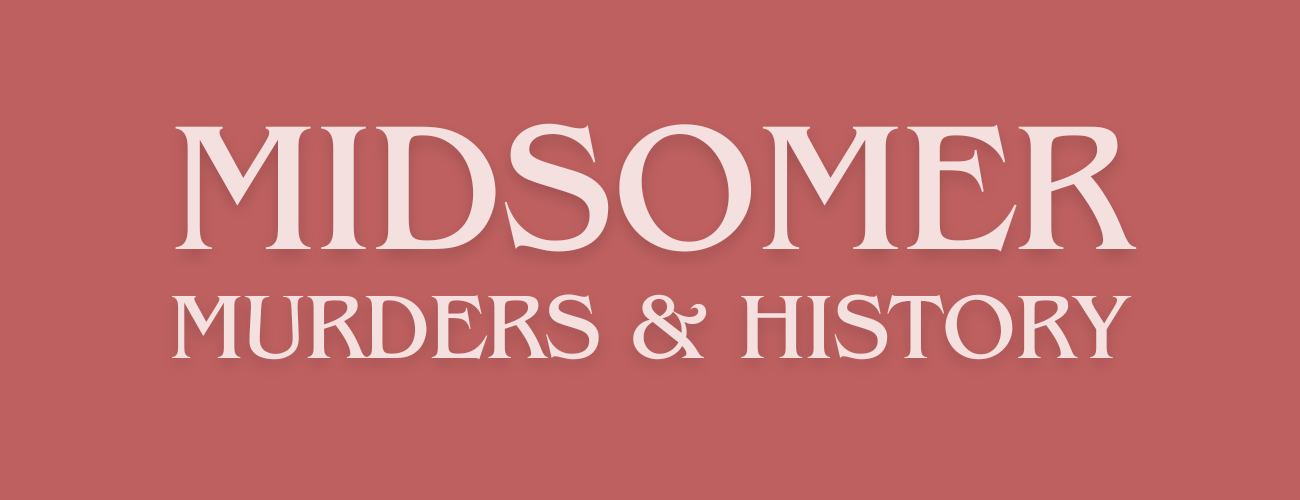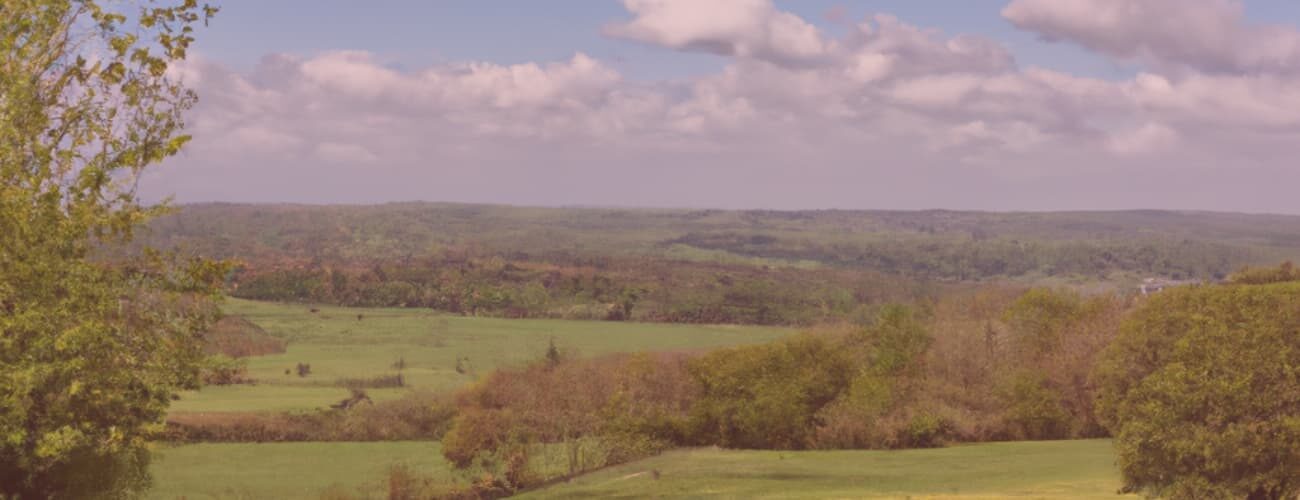•
(Caution: Contains spoilers for Episode: S16E02: Let us prey)
Diesen Beitrag gibt es auch auf Deutsch.
•
Towards the end of the 11th century, people began to worry – again, it must be said – that the world was coming to an end and that the Last Judgement was imminent. Scholars kept calculating new dates based on possible coded references in the Bible and other Christian writings. (Nothing unfamiliar to us when we think of the hullabaloo surrounding 21 December 2012. But fear of God was more widespread then).
It is the time of the Domesday Books, but also of the Doom Paintings, which were also created in England’s churches, especially between 1100 and 1300, but were largely whitewashed during the Reformation. They were rediscovered centuries later. This is also the case with the church crypt at Midsomer St Claire.
Heaven or Hell
The paintings of doom are freschi, positioned either on the back wall to the west or at the front of the church at the end of the chancel. In any case, they were placed in such a way that one had to look at them frequently in order to see vividly the terrible torment of Hell and the gentle salvation of Heaven.
Most of these paintings of the Last Judgement show the moment, according to Christian eschatology, when Christ judges the souls to send them either to heaven or to hell. There are many versions, but basically the depiction is always the same: on the left, or Christ’s right hand, is heaven, and on the right is hell. Christ is enthroned above, usually flanked by Mary and the Apostle John. Below them is a group of people walking along a path that branches off to the right and left.
Purification and redemption
Such an example can also be found in Midsomer’s home country, in the village of Amhampstead, Berkshire, between Reading, Newbury and Streatley, population 400. In St Clement’s there is a fresco dating from around 1300. In the centre of the painting is the Crucifixion with Mary and John, but this was added around 1500. There is no torture in this one, but it may have been painted over by the crucifixion in the centre.
It is the only doom painting in Berkshire, where the episode was filmed. St Mary the Virgin in Hurley, Berkshire, was the exact location, but there is no Doom painting hidden in the building. And certainly not one with numerous methods of torture that then become the truth. In St Claire, Christ is also enthroned above the painting, but there is no separation below, no heaven on the left and hell on the right. Rather, it is a collection of representations of people who violently find death: By being spun on wheels, by being burned, by being stoned, by being drowned with sackcloth over their heads, by torrential rain, … that’s all you can see.
The Doom Painting at Chaldon, Surrey
The doom painting at Midsomer St Claire seems to me to be without parallel in England because it does not conform to the classical scheme. The same is true of the Doom painting in Chaldon, Surrey, which seems to have been inspired by Byzantium. The village was ruled by the Normans from 1066 and is mentioned in the Domesday Book. The same goes for its church, St Peter and St Paul’s, which was built between 1000 and 1086 and has a public footpath through it. The church has been on the National Heritage List, Grade I, since 21 September 1954.
During the restoration of the church in 1870-1871 a doom painting was discovered which, like the one at Armhampstead, dates from the end of the 12th century. In the case of Chaldon, it was painted on a red tempera background around 1170. Most doom paintings were rediscovered in the second half of the 19th century as many churches, chapels and cathedrals were restored (Victorian Restoration).
A description
At the centre of this painting of doom, which is 17′ 3″ (373 cm) long and 11’2″ (340 cm) high, is a ladder leading from the ground to the Tree of the Knowledge of Good and Evil, all the way up to Christ. This ladder is the Ladder of Salvation, which is not uncommon in Byzantine art. The image is divided horizontally into two parts: In the lower part you can see heaven or salvation in the upper part, and also Christ killing the devil and thus helping the people in purgatory(?) to come to him. The lower part is more dangerous because it shows the seven deadly sins and the cauldron in which murderers are boiled for all eternity. This depiction of the Last Judgement and Purgatory is closer to the depiction in Midsomer St Claire, but still not nearly as frightening.
The horizontal division is also a stylistic element, as it combines with the ladder to form a cross.
Downloading the photos is not allowed, so I just link them > here <. -> Just have a look at these close-ups > click <. What a work of art!
In detail: The lower half
The detail in the lower left shows a boiling cauldron with many people, probably murderers, being boiled to death under supervision, and three of the four of the seven sins:
Sloth is represented by three people under a gruesome devil standing on another demon nibbling at their feet. Similarly, in Pride, a demon nibbles on a man’s hand. Another human holds a bottle in his right hand – Gluttony. Finally, two people arguing are about to fall, representing Anger.
The three remaining sins are depicted in the lower right: An embracing couple symbolise Lust, with a devil touching the man’s shoulder and interrupting the action. Elsewhere, a miserly man is astride a fire, his genitals burned. Sacks of money hang from him and coins trickle from his mouth. Finally, there is envy, in this case from an older person to a younger one.
There are two other scenes in this quadrant: Firstly, dishonest craftsmen doing impossible tasks – for example, making an iron horseshoe without an anvil – and also the tree of the knowledge of good and evil full of fruit, with the snake wrapped around the upper branches of the tree.
In detail: The upper half
In the upper half are all those who can avoid eternal damnation. This is also ensured by Christ, who stands above Satan, who is bound fully extended to a giant worm that is nibbling at his head. Christ also drives the staff of the vexillum into Satan’s mouth.
And in the upper left square, St Michael is weighing souls. The weighing of the souls of those in Purgatory is an important element of the Last Judgement, as is the scene in which the Devil tries to make the scales heavier (i.e. make people more sinful) so that he can take them to Hell instead of just Purgatory.
Sounds a bit Midsomer-ish, doesn’t it?
Read more about Midsomer Murders & History
The Chronology of Midsomer County by Year or by Episodes
Deep Dives into Midsomer & History
This is an independent, non-commercial project. I am not connected to Bentley Productions, ITV or the actors.

Literature
- Bartlett, Robert: The Making of Europe. Conquest, Colonization, and Cultural Change 950-1350. Princeton 1994. P. 108.
- Marshall, Anne: Ashampstead, Berkshire (+ Oxford) C.13. In: Medieval Wall Painting in the English Parish Church.
- Marshall, Anne: The Doom, or Last Judgement and the Weighing of Souls. In: Medieval Wall Painting in the English Parish Church.
- NN: Parishes: Chaldon. In: H. E. Malden (Ed.): A History of the County of Surrey 4. London 1912. P. 188-194.
- NN: The Medieval Doom Painting. In: St. Thomas, Salisbury.
First published on MidsomerMurdersHistory.org on 29 February 2024.
Updated on 22 August 2025.


4 thoughts on “Doom Paintings”